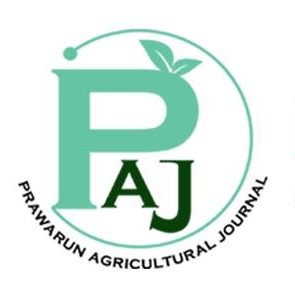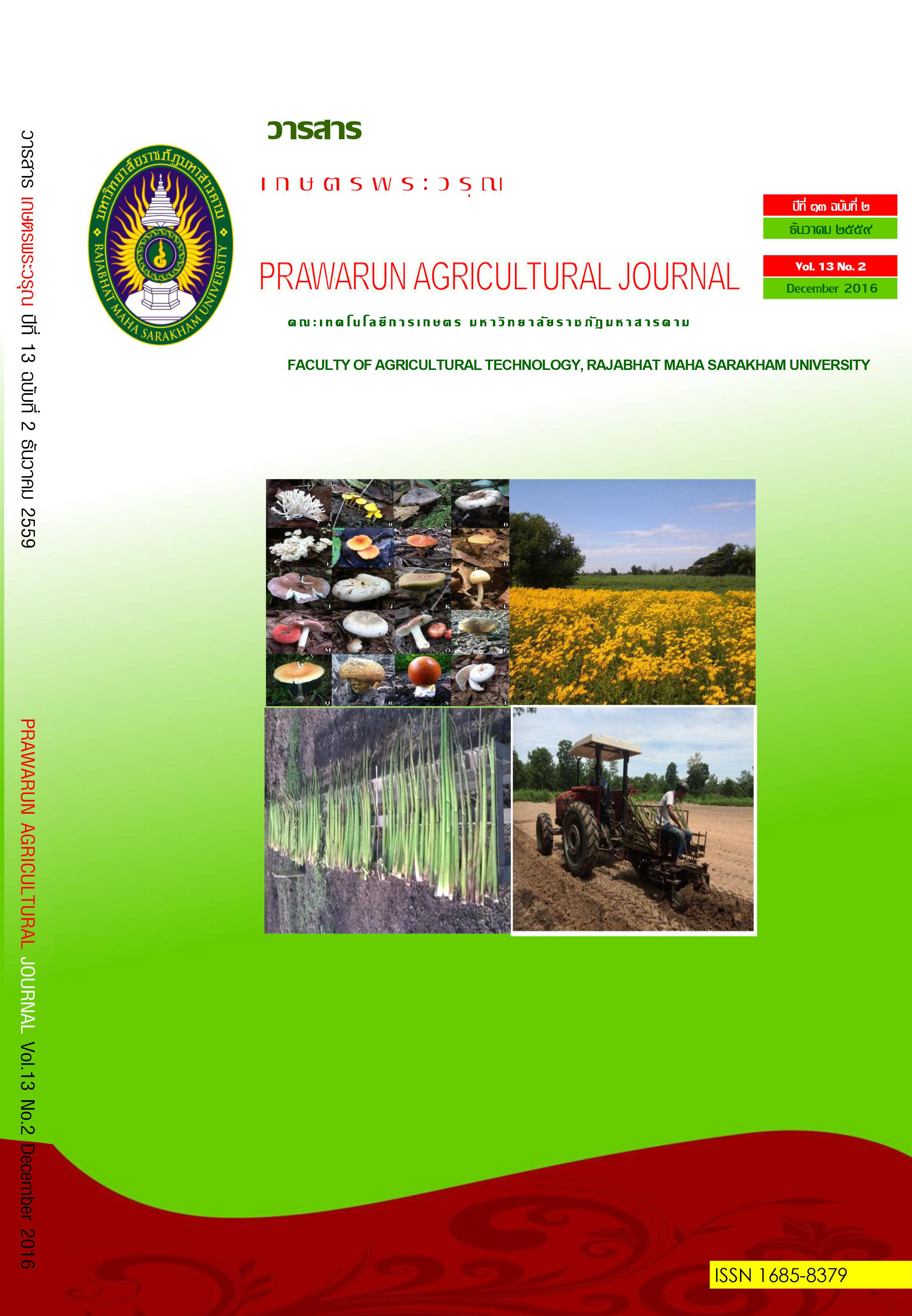คุณค่าทางโภชนะและจลนพลศาสตร์การย่อยสลายของกากมันสําปะหลังจากการผลิตเอทานอล โดยใช้เทคนิคผลผลิตแก๊ส
Main Article Content
บทคัดย่อ
การศึกษาครั้งนี้มีวัตถุประสงค์เพื่อศึกษาคุณค่าทางโภชนะและจอมพลศาสตร์การย่อยสลายของการมันสำปะหลังจากการผลิตเอทานอลหมักโดยใช้เทคนิคผลผลิตแก๊สวางแผนการทดลองแบบ 3 x 243 FacN8k 3 (N) จำนวน 3 โดยมี 3 ปัจจัยคือปัจจัย A) สัดส่วนของกากมันสำปะหลังจากการผลิตเอทานอลต่อกากมันสำปะหลัง 3 ระดับคือ 1N): 4 85: {S แล * 70:30 ปัจจัย 8) การไม่ใช้และการใช้ยีสต์ในการหมักและปัจจัย) ระดับของกากน้ำตาล 3 ระดับคือ 2, 3 และ 4 x 3 ม. ทั้งหมด 18 ทรีตเมนต์ผลการศึกษาพบว่าปริมาณโปรตีนในทรีตเมนต์ที่มีสัดส่วนของกากมันสำปะหลังจากการผลิตเอทานอลต่อกากมันสำปะหลัง 100: 0 ใช้ยีสต์ในการหมักร่วมกับกากน้ำตาล 2 และ 3 6 มีโปรตีนสูงกว่า (sae) ทรีตเมนต์อื่นเมื่อพิจารณาปัจจัย A พบว่าการลดสัดส่วนของกากมันสำปะหลังจากการผลิตเอทานอลลงมีผลทำให้โปรตีนลดสง (Kaoi) ขณะที่ศักยภาพในการผลิตแก๊สความสามารถในการย่อยได้ของอินทรียวัตถุและค่าพลังงานที่ใช้ประโยชน์ได้จะเพิ่มขึ้น (0) ส่วนปัจจัย 5 พบว่าการใช้ยีสต์ในการหมักทำให้โปรตีนสูงกว่าค <oot) ไม่ให้มีสต์และยังพบว่าการใช้งยิ่งในการพม่าจะสามารถเพิ่มศักยภาพในการผลิตแก๊ส (P <0.05) แต่ไม่มีผลต่อความสามารถในการย่อยได้ของอินทรียวัตถุและค่าพลังงานที่ได้ประโยจนได้ (P> 0.05) สำหรับปัจจัย C พบว่าการใช้กากน้ำตาลที่ระดับ 3 5 และ 6 6 มีผลทำให้ค่าพลังงานที่ใช้ประโยชน์ได้ไม่แตกต่างกัน แต่สูงกว่า (P <0.05) การใช้ที่ระดับ 0%


